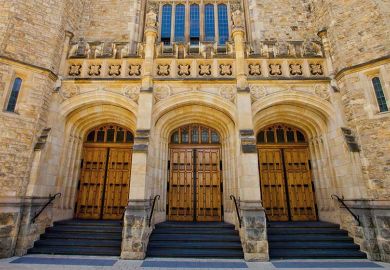A merger of two South Australian universities has come back on the cards following several false starts, thanks to state government pressure and a behind-the-scenes effort to defuse potential dealbreakers.
The universities of Adelaide and South Australia have committed to “serious” discussions about joining forces, with the two institutions’ councils instructing their respective vice-chancellors to mount a feasibility study and report back by June.
The universities cite the sector’s “fragility” and “the constant need to adapt” as core reasons for a potential union. But they also acknowledge pressure from the governing Labor Party, which promised a “commission” to explore university mergers during campaigning for the South Australian state election in March.
“Each of our universities alone are too small and too undercapitalised to make it into the list of top international universities,” then opposition leader Peter Malinauskas explained in a pre-election policy statement. “They simply don’t do enough large-scale research to be recognised as world leading, and that is holding our state back.”
After winning the election, Mr Malinauskas allocated A$1 million (£550,000) to bankroll the commission. The government’s “preparedness to invest” suggests a merger is now feasible, the universities said, after a discussion paper published during the most recent merger talks – in 2018 – identified lack of government support as a major impediment.
“We decided to challenge ourselves and look at what might be possible,” Adelaide vice-chancellor Peter Høj said, in a pre-recorded message with his University of South Australia (UniSA) counterpart David Lloyd.
Professor Høj was vice-chancellor of UniSA during an even earlier round of merger talks in 2012. At the time, he said that at least two of the state’s three public universities would need to join forces to compete with richer eastern state institutions.
The 2012 discussions were reportedly terminated by Adelaide, while UniSA pulled the plug on the 2018 negotiations. Professor Lloyd subsequently told staff that the university had decided against a union after considering the idea “through a cost-benefit lens”.
But he indicated that things had now changed. “We believe that together, we could create something that is more than the sum of its parts,” he said.
“We know that there’s been ongoing speculation about whether we could combine our institutions. Now we are determined to go further than before, to seize this opportunity and to apply ourselves to exploring what the creation of a new university might deliver.”
While leadership tensions were rumoured to have scuttled the 2018 negotiations, the two vice-chancellors deny this. Nevertheless, the universities have already agreed on some key issues in the event that the merger proceeds.
The combined institution would be called “Adelaide University” and would commence in 2026, under new legislation largely modelled on the UniSA act. It would initially operate under a “co-leadership” model, headed by two “co-vice-chancellors” pending a global process to appoint a substantive leader.
That process would be overseen by a “transition council” which would govern the institution for the first year, with equal numbers of members appointed by each constituent institution and a transitional chancellor nominated by UniSA.
Register to continue
Why register?
- Registration is free and only takes a moment
- Once registered, you can read 3 articles a month
- Sign up for our newsletter
Subscribe
Or subscribe for unlimited access to:
- Unlimited access to news, views, insights & reviews
- Digital editions
- Digital access to THE’s university and college rankings analysis
Already registered or a current subscriber?








